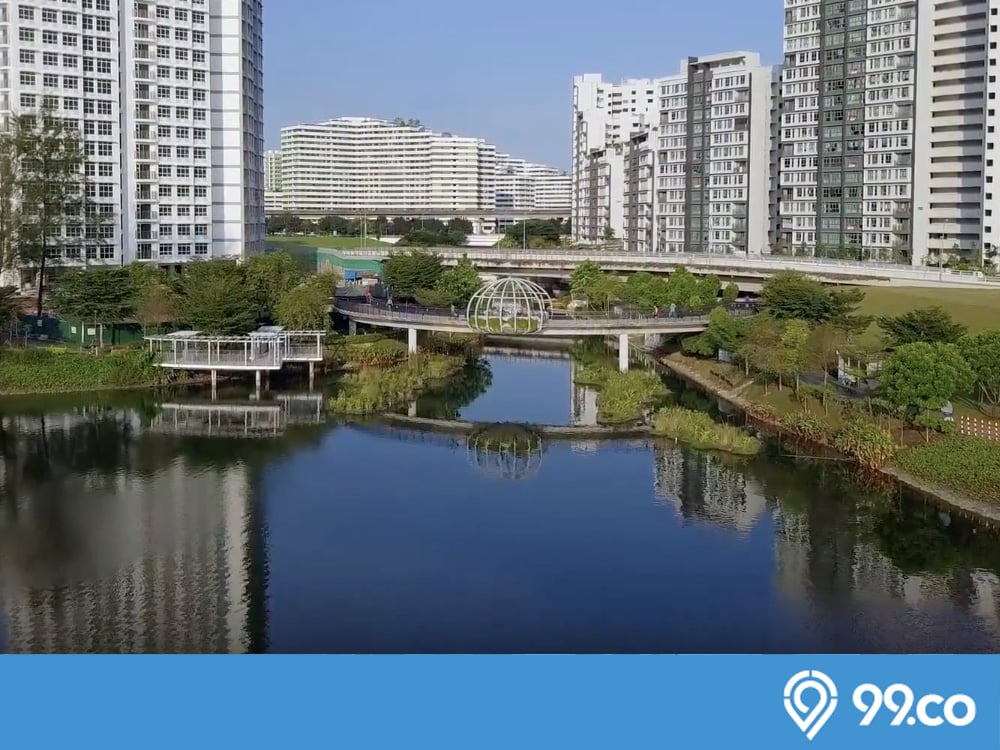MARCH 2, 2018

Sunset bridge over Punggol waterway
The Sumang Walk Executive Condominium (EC) land plot has got a lot of attention lately. Besides attracting 17 bidders and one of the highest prices in the market, it’s already got attention from home buyers. Those who are looking to buy in a few years will be watching the site closely, even if it seems the resulting development could be pricey.
What’s the buzz surrounding the Sumang Walk EC site?
The EC site at Sumang Walk (in Punggol) attracted 17 bids among developers. The top bid was $509.37 million, and came from a joint venture between CDL Constellation (a subsidiary of City Developments) and TID Residential (owned by TID Pte. Ltd.)
This comes to about $583 per square foot, which is the highest recorded land price to date (for an EC unit). Based on the high bid, the estimated launch price for the upcoming development is estimated at between$1,100 to $1,150 per square foot. If that’s correct, it would set another record – this could be the most expensive EC in the Punggol area to date. Assuming an average unit size of 1,000 square feet, we might be looking at million-dollar condo units in the Punggol area – an area generally known for more affordable housing.
The Sumang Walk EC site measures 27,056.4 square metres, and is on a 99-year leasehold. The latest news from the winning developers is that they’re considering a project of 13 blocks, of between 10 to 17 storeys, with a total of 820 units.
What makes this site so desirable?
Three factors work to raise the price of the Sumang Walk EC site so high. These are:
– It was the only available EC site for developers right now
– Confidence in ECs and recovery in the residential market
– Development of the Punggol Digital District
It was the only available EC site for developers right now
To be clear, there are three more EC sites available for land sales in 1H2018, but Sumang Walk is the only EC that will be launched in 2019. The other sites will only be launched in 2020.
In addition, JLL National Director, Mr. Ong Teck Hui, mentioned in a Business Times report that “The absence of EC land tender for one-and-a-half years, a severely undersupplied market with a paltry unsold stock of less than 1,000 EC units (including the upcoming 628-unit Rivercove Residences along Anchorvale Lane in Sengkang) and a rising private residential market are contributors to the bullish outlook for the EC market among bidders.”
Confidence in ECs and recovery in the residential market
The residential property market seems to be turning around this year. Home prices were up one per cent in 2017, after declining 3.1 per cent in 2016. We also saw a rise in sales volumes for private homes, at 23,113 transactions between January and November 2017. The beats the total sales for the entire year of 2016, which were just 16,378.
At the same time, developers have always been bullish on the sales of ECs. In just the first seven months of 2016, for example, 2,697 EC units were sold by developers. This was more than the 2,550 EC units sold in the entirety of 2015.
In 2016, ECs like Wandervale sold half of its 534 units on the opening weekend, whilst Treasure Crest sold 72 per cent of its 504 units on the opening weekend.
ECs are popular because, despite being full suite condos that are fully privatised after 10 years, buyers can still get CPF grants when purchasing them. They are, in effect, a form of “government subsidised private housing”.
As the Sumang Walk EC will be the only housing type of its kind to launch in 2019, demand is sure to be high.
Development of the Punggol Digital District
Punggol itself is picking up steam, as a desirable location. Once known for affordable housing and relative seclusion, it’s now undergoing the same kind of transformation we once saw in Jurong West.
The government has plans to expand Punggol Town Centre toward the waterfront, and develop it as a mixed-use district (commercial, residential, and business park). The new Singapore Institute of Technology (SIT) campus will be located here, and the area will be developed into a “digital district” for tech innovation.
In addition, the area will have a new hawker centre, revamped community club, and a new childcare centre.
The Sumang Walk EC may be the beginning of a new era for Punggol, which may no longer be seen as just the place for affordable housing in the years to come.
Source: 99.co (2 Mar 2018)









